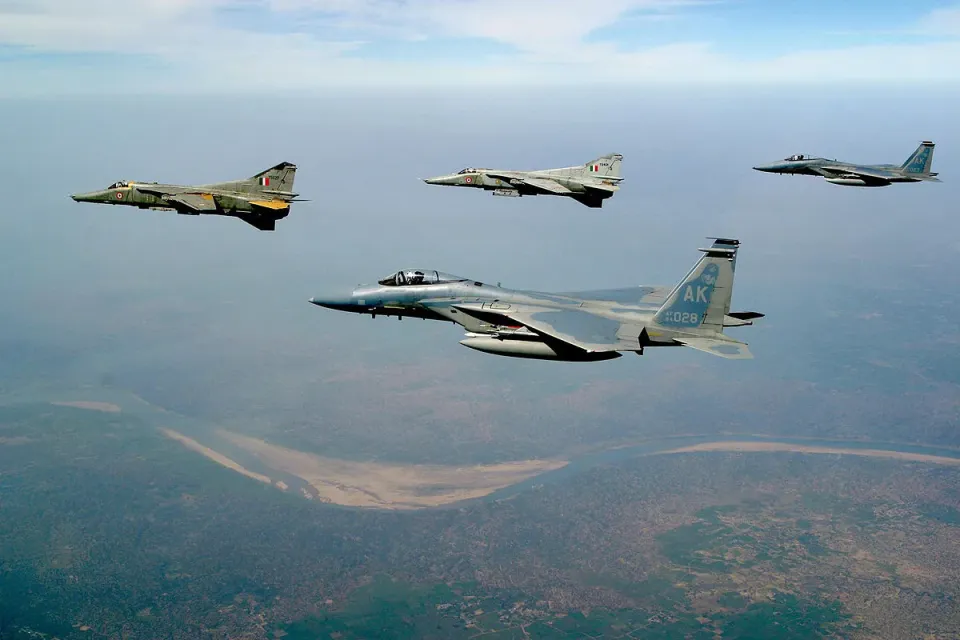IAF Neutralizes Chinese Surveillance Balloon: What Are China's Intentions and India's Next Steps?
~ By Sujeet Rawat
Oct 8 2024, 12:33 AM

India recently demonstrated its resolve in safeguarding national security by shooting down a Chinese spy balloon using a Rafale fighter jet. This incident highlights the growing aerial threats from China and raises questions about future defense strategies. This blog explores the strategic responses, the technology behind spy balloons, and the implications for India’s air defense system.
In recent events, the Indian Air Force (IAF) acted swiftly to neutralize a Chinese spy balloon, which was hovering in Indian airspace at a high altitude. The balloon was reportedly detected at an altitude of over 55,000 feet near the eastern border, close to China. The Indian Air Force, taking no chances with national security, deployed a Rafale fighter jet to eliminate the threat. This action highlights the growing concerns India faces regarding aerial surveillance technologies employed by foreign adversaries like China.
Spy balloons, though they might appear outdated in an age of satellites and advanced drones, offer unique advantages. These balloons are often used for surveillance purposes, gathering sensitive information without the need for sophisticated electronic intervention. Their high altitude and stealthy nature make them difficult to detect with conventional radar systems, which is why India’s ability to identify and intercept such a balloon is noteworthy.
China’s use of high-altitude balloons has been a part of its broader surveillance strategy for years. Not only India but also other countries, like the United States, have faced similar issues. In 2023, the United States had a similar encounter when a suspected Chinese spy balloon was shot down after it traversed through US airspace. The US government has since tightened its protocols for dealing with such threats. India, observing these incidents, is now formulating its own standard operating procedures to deal with such aerial threats in the future.
In the recent incident, the Indian Rafale aircraft, stationed in West Bengal, was on standby and deployed to engage the balloon. Using its advanced missile systems, the Rafale effectively destroyed the balloon before it could collect any significant data. It was carrying a payload, which raised further suspicions about its intended use. The quick action of the IAF ensured that any potential data collection or interference was stopped in its tracks.
Spy balloons, like the one India encountered, are part of a broader military strategy employed by nations like China. These balloons can stay airborne for extended periods and gather critical data over a wide area. In this case, the balloon hovering near India’s eastern border likely had military and surveillance purposes. As tensions between China and India remain high, particularly along disputed borders, these kinds of provocations are expected to continue.
Globally, many nations are now paying closer attention to these kinds of aerial threats. The US, for example, has documented several instances where Chinese balloons entered their airspace, some of which were shot down. These balloons are not just a concern for India and the US but also for other nations in Asia and Europe, as Chinese military entities continue to invest in high-altitude surveillance systems.
From a strategic point of view, India’s swift response to the spy balloon signals its readiness to protect its airspace. The Indian government has been investing heavily in its air defense systems, and this incident shows that the country is prepared to respond to both traditional and non-traditional aerial threats. With the IAF's ability to deploy combat aircraft like the Rafale on short notice, India is signaling to its adversaries that any such provocations will be met with a strong and immediate response.
However, the threat of spy balloons is not just a military one. It also raises concerns about data privacy and the protection of sensitive information. In an age where data is considered the new oil, any breach of sensitive information, even through non-electronic means like a spy balloon, can have far-reaching implications. India, like other nations, is now more vigilant in safeguarding its critical infrastructure and ensuring that no foreign adversary can collect unauthorized data.
Looking ahead, India is expected to further bolster its defence mechanisms. The IAF has already indicated that it is working on formulating a clear standard operating procedure for such incidents, ensuring that any future balloon or similar threat is neutralized even quicker. Moreover, with advancements in drone and radar technology, India is looking to improve its detection capabilities so that such threats can be intercepted before they become a serious issue.
ALSO READ| Will Stock Markets Crash if BJP Loses Key State Elections in Haryana, J&K, Maharashtra, and Delhi?
In conclusion, the incident involving the Chinese spy balloon marks a significant moment for India’s national security efforts. The quick and effective action of the Indian Air Force showcases the country’s commitment to protecting its airspace and defending its sovereignty. As technology continues to evolve, India must remain vigilant against both traditional and modern threats, ensuring that it stays ahead in the realm of aerial defense.
Recent Posts
Trending Topics
Top Categories
QUICK LINKS
Copyright © 2024 Arthalogy.com. All rights reserved.
